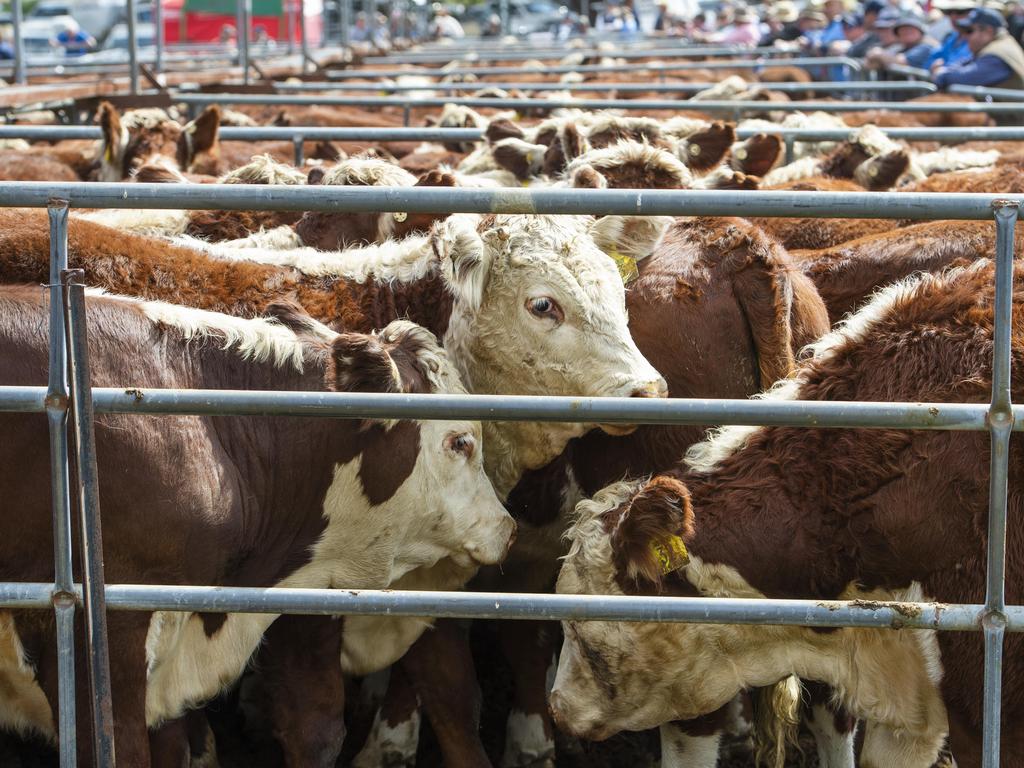Analysis: How the US drought is impacting saleyard indicator prices
The saleyard indicator to record the fastest recent rise has been dairy steers, while manufacturing beef is a market segment to watch as drought in the United States reshapes its cattle herd.
The saleyard indicator to record the fastest rise in recent trading has been dairy steers, and manufacturing beef is a market segment to watch as drought in the United States reshapes its cattle herd.
Decently finished Friesian steers broke through the $4/kg barrier at prime markets in Victoria last week, and the rolling price indicator for dairy steers was listed at 382c/kg liveweight on Monday to show a mountainous upward climb of almost 50c/kg in just 10 days.
The fortunes of manufacturing steers are linked into the cow market, and slaughter cows have also rallied amid tight supplies and ongoing solid demand for grinding beef on the world stage.
And looking at the data coming out of the US, manufacturing grade cattle look set to benefit from both seasonal and economic influences next year.
To explain this, earlier this month the US Department of Agriculture revised its forecasts for beef and has upped price estimates for cattle, particularly cows, based on the drought induced kills currently being recorded and evidence that consumers are starting to switch to cheaper cuts of meat.
Cow slaughter across the US was the highest on record last month as feed and water conditions deteriorated in late summer, the USDA reported.
“The pace of beef cow slaughter in July is the fastest recorded since the USDA Agricultural Marketing Service began reporting in 1986,” it stated in its latest industry outlook.
“Looking at the rest of year, it is expected that beef cow slaughter will likely decline, but not go below year-ago levels until early next year.”
Despite the high cow cull and forecasts for it to continue it coming months, grinding beef prices have remained solid in the US which analysts have linked into the economic environment and tighter spending among consumers.
Market analyst Len Steiner of Steiner Consulting, said they were factoring in upward price movements for grinding beef.
“As consumers trade down to less expensive options this should bolster the value of lean grinding beef and there could be more upside (to cow prices) in the winter,” he said.
Some price forecasts have been floated.

The USDA has upped its prediction for cow prices next year to an average of US$101 carcass weight, a reasonable increase on the average figure being touted for this year of US$79. The USDA forecasts are broken down by quarter, and the figures show they are expecting cow prices to accelerate from mid next year.
Mr Steiner said based on cattle futures pricing for feeder steers, his analysis showed a potential rise of up to 30c/kg for cull cows in the US by December.
It paints a positive picture for Australian manufacturing cattle, as US grinding beef prices set a floor in the global market and the performance of 90 chemical lean (90 per cent red meat 10 oer cent fat blend) cow meat is closely monitored by analysts.
The USDA report also made observations about the US cattle herd cycle, which is another famed indicator that market watchers follow.
The current US cattle cycle dates from 2014 and hit a peak in 2019 and has been in decline in the years since.
The latest official herd size for the US is 98.8 million cattle, which is 2 per cent or 2 million lower than a year ago, according to data from the National Agricultural Statistics Service in the US.
NASS also investigated producer intentions to rebuild numbers and its findings suggest the US herd is still in decline.
The report found more heifers were destined for feedlots rather than breeding.
“Producers intend to keep about 4.2 million beef heifers as cow replacements, almost 3.5 per cent fewer than producers intended to keep at this time last year,” the report states.
“This is one of the lowest retention estimates of replacement heifers as a ratio to beef cows since 2011, and the least total heifers to be kept since this data series began in 1973.”
The NASS report said all the evidence pointed to a shrinking US beef herd.
“From the time the herd size peaked in 2019, it appears the contraction of the beef cattle herd has been accelerating,” it said.
As the US is a key competitor with Australian beef, a declining herd potentially takes some supply pressure out of export markets in the longer term, which could help balance the increase in Australia’s production and herd size going forward.




